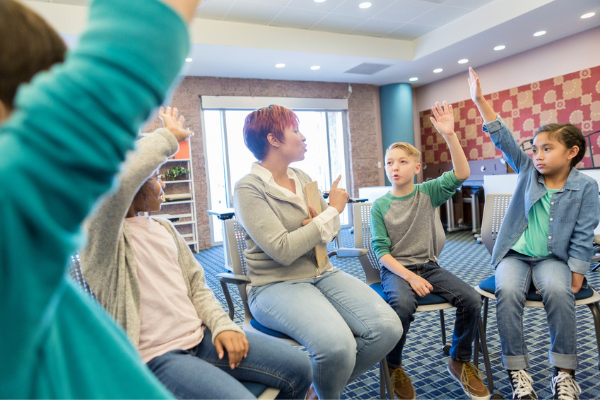
Today’s teens have busy lives and schedules – before school, after school, evenings, and weekends – so by the time they get to confirmation class, they might appear completely out of gas. Focusing on topics like the history of your denomination is a heavy lift when often youth just want to turn off their brains and sleep or turn on their devices to relax.
That means that one of the biggest challenges of youth ministry is to make confirmation class an engaging, interesting way to spend a precious hour of time. So how can you keep them coming back for more? Try these tips to encourage deeper engagement and more meaningful participation in your confirmation classes.
#1: Snack attack
If your confirmation class is after school, but before dinner, be prepared with healthy snacks to keep them engaged – their bodies and brains may literally need some food to focus. Plan a potluck or take turns providing some healthy options, using sugary cookies and candy less frequently. Having water available (no matter when you host confirmation class) will also help keep students’ minds more engaged.
#2: Make it personal

Ever notice how tweens and teens can’t stop talking to each other? They’re wired that way, and information generally hits the emotional centers of their brains before the cognitive centers at this age. That means you’ll need to give them time to process what they’re learning by having them relate it to their own lives in some way. For example, try some of these ideas:
- Ice Breakers: Start each class with a getting-to-know-you activity to help build rapport and have a little fun. Getting your students comfortable with each other is crucial to keeping them engaged in the topics at hand. Make it fun, and they’ll look forward to class!
- Think-Pair-Share: After explaining a concept, have students pair up and review the main points or answer an opinion question about the topic. Once they’ve discussed privately, they can share with the class as a whole or in a smaller group.
- WWYD: What would you do? is a classic question that’s perfect for getting at the heart of moral or ethical dilemmas. At this age, it’s a question that can make Bible stories and faith concepts come alive by reminding youth that God’s people have been dealing with tricky problems since Adam and Eve in the Garden of Eden.
#3: Get physical
Regular physical activity has a huge effect on the human brain, and even just a minute of motion can rev up learning centers and help students retain more information. It’s especially important for young teens with growing bodies to get up and move around to boost their heart rates and take some of the stress off of their growing bones.
Plan your classes to incorporate a few stretch breaks, or do 30 seconds of jumping jacks every half hour or so to keep energy up. You can also plan lessons that involve moving around the room – bonus points if there’s social interaction at the same time!
#4: Bring them back
If you’re worried about students getting out of hand with too much chat time or physical movement, develop a signal that you can use consistently to get their attention and bring them back to a quiet, focused state.
Clap a rhythm that they clap back at you, or call out a short code phrase that they answer as a group. The simpler the better – just make sure you use it every time so the expectation of attention afterwards is crystal-clear.
#5: Let them lead
Of course you have a lesson plan to get through so that your students have all the knowledge they need to be confirmed, but it’s also important to let them guide some of the discussion when you can.
Ask them to bring examples of current events that highlight a real-world example of an issue you’ve discussed, or allow students to design their own service-learning projects. With guidance, you can also let them take turns leading group discussions or presenting information about a topic they’ve researched while you model active, interested listening.
When you keep in mind that the youth in your confirmation classes want to engage with each other – and with interesting questions and topics – all you have to do is give them the opportunity to do so. Provide some fun, some food, and some fascinating topics that relate to their lives, and you’ll be well on your way to designing a confirmation class that they truly enjoy.
Interested in learning more about engaging confirmation youth? Check out our other posts in the series here and here.



